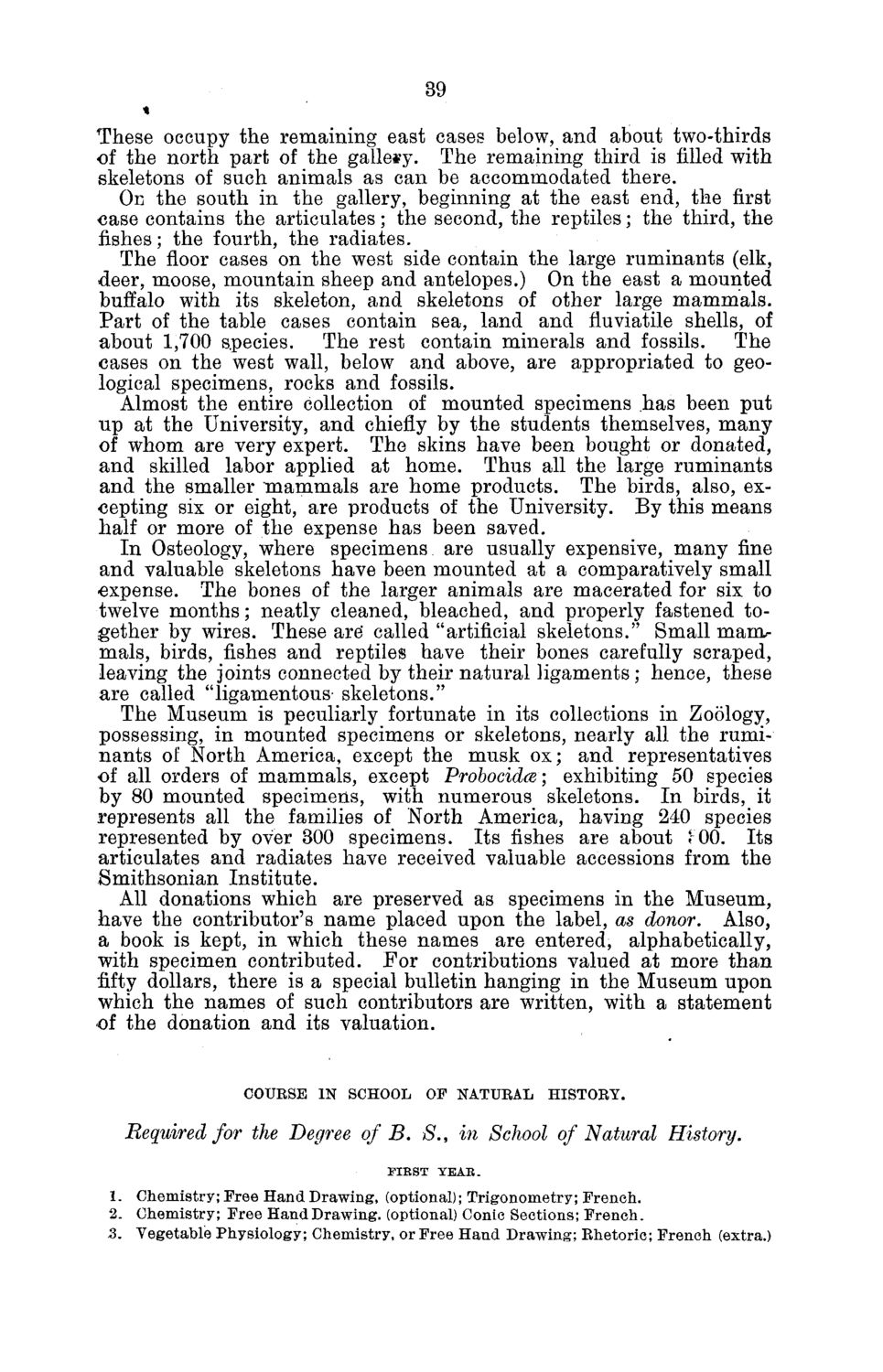| |
| |
Caption: Board of Trustees Minutes - 1882
This is a reduced-resolution page image for fast online browsing.

EXTRACTED TEXT FROM PAGE:
39 These occupy the remaining east cases below, and about two-thirds of the north part of the gallery. The remaining third is filled with skeletons of such animals as can be accommodated there. OE the south in the gallery, beginning at the east end, the first case contains the articulates; the second, the reptiles; the third, the fishes; the fourth, the radiates. The floor cases on the west side contain the large ruminants (elk, deer, moose, mountain sheep and antelopes.) On the east a mounted buffalo with its skeleton, and skeletons of other large mammals. Part of the table cases contain sea, land and fluviatile shells, of about 1,700 species. The rest contain minerals and fossils. The cases on the west wall, below and above, are appropriated to geological specimens, rocks and fossils. Almost the entire collection of mounted specimens has been put up at the University, and chiefly by the students themselves, many of whom are very expert. The skins have been bought or donated, and skilled labor applied at home. Thus all the large ruminants and the smaller mammals are home products. The birds, also, excepting six or eight, are products of the University. By this means half or more of the expense has been saved. In Osteology, where specimens are usually expensive, many fine and valuable skeletons have been mounted at a comparatively small expense. The bones of the larger animals are macerated for six to twelve months; neatly cleaned, bleached, and properly fastened together by wires. These are' called "artificial skeletons." Small mamr mals, birds, fishes and reptiles have their bones carefully scraped, leaving the joints connected by their natural ligaments; hence, these are called "ligamentous- skeletons." The Museum is peculiarly fortunate in its collections in Zoology, possessing, in mounted specimens or skeletons, nearly all the ruminants of North America, except the musk ox; and representatives of all orders of mammals, except Probocidcs; exhibiting 50 species by 80 mounted specimens, with numerous skeletons. In birds, it represents all the families of North America, having 240 species represented by over 300 specimens. Its fishes are about ^00. Its articulates and radiates have received valuable accessions from the Smithsonian Institute. All donations which are preserved as specimens in the Museum, have the contributor's name placed upon the label, as donor. Also, a book is kept, in which these names are entered, alphabetically, with specimen contributed. For contributions valued at more than fifty dollars, there is a special bulletin hanging in the Museum upon which the names of such contributors are written, with a statement of the donation and its valuation. COURSE IN SCHOOL OF NATURAL HISTORY. Required for the Degree of B. S.9 in School of Natural FIRST YEAE. History. 1. Chemistry; Free Hand Drawing, (optional); Trigonometry; French. 2. Chemistry; Free Hand Drawing, (optional) Conic Sections; French. 3. Vegetable Physiology; Chemistry, or Free Hand Drawing; Rhetoric; French (extra.)
| |